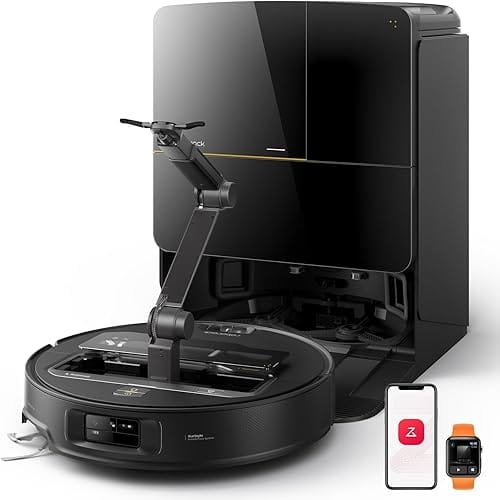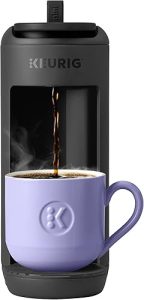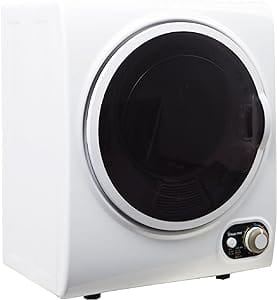One of the greatest improvements I’ve seen in years is the retractable arm on the Roborock Saros Z70 ($2,599), which can pick up socks and other items on the floor and return them to their proper place. Although its first version is more of a party trick than a practical utility, the robotic appendage has the potential to advance the category significantly. Other features of this high-end robot vacuum and mop combination include self-emptying capability, automated mop cleaning and drying, integrated voice controls, security camera functionality, and the capacity to raise itself over barriers.
The Saros Z70 is a model to avoid if you’re only seeking useful cleaning assistance because of its outrageous price, even though it appeals to early adopters who are prepared to spend for the cutting edge of robotic technology and handle its developing pains. The Ecovacs Deebot X8 Pro Omni, which retails for $1,299.99, is still our Editors’ Choice winner for hybrid robot vacuums and is a better all-around cleaner.
The Robot Arm:
The Roborock Saros Z70 isn’t a concept, but humanoid robot butler demonstrations, replete with arms that can identify, pick up, and store goods, have long been a mainstay at CES. It is authentic and obtainable. For robot vacuums, the development of a working robotic arm capable of object transportation marks a turning point.
Furthermore, the robot arm works. During testing, it was able to successfully pick up socks and move them to the appropriate bin in a separate area before continuing to vacuum. The Z70’s current lifting capacity is limited to 10.58 ounces. Additionally, it can only identify and pick up specific objects, such as Kleenex, socks, sandals, and little towels.
Socks or paper must be bundled into a ball for it to function correctly. The aperture for slippers or sandals ought to face the middle of the space rather than the side. Any item you wish to have picked up must be on a hard floor—not carpeting—and cannot be in an area that is too small or too close to a wall.
You could have picked things up yourself multiple times by the time you had them ready for the Z70 to grab. The Z70’s accompanying Roborock app (available for iOS and Android) allows you to manually direct the robot arm so that it may grasp any object that is under the weight restriction. This is a nice novelty, but it’s not a quick procedure. While it’s amazing to watch in action, the robot arm isn’t going to save you any time or effort when it comes to clearing up your place right now.
Features
All of the features of the Saros Z70, excluding the robot arm, are available on less expensive models in Roborock’s lineup. It is priced at $1,599.99 and is positioned next to the Saros 10 and Saros 10R, which differ mostly in their navigation and mopping systems. The Saros Z70 and Saros 10 have a class-leading suction power of 22,000Pa, which is marginally higher than that of the 10R (20,000Pa), the $999.99 Eufy Omni E28 (20,000Pa), and the Ecovacs Deebot X8 Pro Omni (18,000Pa).
While the Saros 10 is the only one of the three with the company’s outdated semicircular VibraRise mopping mechanism, the Saros Z70 and 10R mop have dual-spinning pads. A new feature for Roborock models that we initially observed on Dreame robot vacuums last year, automated mop detaching, is supported by all three.
The Saros 10 has a retractable LiDAR sensor, whereas the Saros Z70 and 10R use Roborock’s innovative StarSight 2.0 technology for navigation. This system uses embedded twin time-of-flight sensors instead of the usual LiDAR tower for a shorter build. Notable elements of Roborock’s prior flagship models are available in all three Saros series members, such as the home security camera capabilities originally seen on the MaxV Ultra series and the AdaptiLift Chassis for removing obstructions and thresholds that debuted on the Qrevo series.
Design
At first appearance, the Saros Z70 appears to be a somewhat typical, puck-shaped robot vacuum because the robotic arm is automatically retracted. The arm is covered by a tinted, semi-transparent panel that is off-angle reflecting. Around the panel is a silver plastic rim with an emergency stop button.
Just above the arm’s compartment are two more physical buttons that are each lighted. You may hit the top power button to start or pause a run, or you can long press it to boot up and shut down the robot. The robot returns to its base by pressing the lower home button.
The dustbin for manual emptying and filter cleaning is accessible through a plastic panel that lifts away below the arm’s compartment. An upward-facing VertiBeam laser with its indent is located directly behind this panel. By assisting the robot in avoiding lateral impediments and determining when it can fit beneath furniture, this laser complements the time-of-flight navigation sensors and RGB camera in the front bumper.
The robot’s internal mopping water compartment is located in the back area. An omnidirectional caster wheel is positioned in front, two retractable main wheels flank the central brush roll, and cliff sensors encircle the bottom.
To prevent tangling, the main brush roll, which is detachable, has bristles, rubber fins, and metallic slots. The mopping pads readily peel away for manual washing after snapping into their own hexagonal grooves on the robot’s bottom. The left pad can extend thanks to a slot on the side. Additionally, the bottom side brush can extend to the side or lift out of the way as needed.
Battery Life
I used a series of whole-home runs to test the Saros Z70’s battery life before it decided to give up and return to its base for a charge. It was just over a quarter of the way into its second run, which lasted 111 minutes, when it had to halt.
Although the Saros 10 and Deebot X8 Pro Omni both had larger battery lives (134 and 118 minutes, respectively), the Saros Z70 still has more battery life than the 90-minute mark, which I believe is sufficient to cover the majority of homes in a single run.
Vacuum and Mopping Performance
I test the effectiveness of my vacuum in two separate 100-square-foot rooms in my apartment, one with hardwood floors and the other with wall-to-wall carpeting. To find out how much the robot picks up, I first clean the floor, then lay a certain amount of rice on it, let it run, and weigh its dustbin before and after. The rice stands in for common waste particles like crumbs. I then conducted these experiments again with sand to measure the pickup of recalcitrant particles. Here are all the specifics of my testing process.

With a flawless 100% on carpet and 93.5% on hardwood, the Saros Z70 performed admirably when it came to picking up rice on both surfaces. Even though rice on carpet is the simplest of these four tests and mostly aids in my assessment of coverage effectiveness, achieving a perfect score is still quite uncommon and remarkable. The Deebot X8 nearly reached that goal (99.99%) but fell short. I can evaluate how well the robot cleans corners and edges, and see if it tends to throw dirt as it works by using rice on hardwood. The Z70 continued to throw minimally and achieved scores on the hardwood rice that were comparable to those of the Saros 10 (95%) and the Deebot X8 (90%), respectively.
On the other hand, the Saros Z70 failed my most difficult stress test, which involved sand on carpet. In comparison to the Saros 10 (40.7%) and the Deebot X8 (37.7%), it only collected 29.08% of the debris. Its performance here may surprise you, given its strong suction power, but I frequently find that higher Pa doesn’t always translate into better cleaning results in the real world. This test is also a gauge of a robot’s intelligence because I run it with default parameters. Perhaps because it doesn’t have to utilize a significant portion of its processing capacity to control a robot arm, the Saros 10 was able to detect more dirt than the Z70 and increase the suction correspondingly.
Conclusion
With its unique retractable robot arm, the Roborock Seros Z70 can pick up clutter while it vacuums and mops. Aside from the robot arm, the Z70 combines a new navigation system with all of the best features from the company’s past flagship models, including the ability to lift itself over obstacles and patrol your home as a roving security camera. It’s a capable, high-end machine, but it didn’t impress in terms of stubborn debris pickup, and its robot arm needs refinement to live up to its potential. Ultimately, the Ecovacs Deebot X8 Pro Omni vacuums and mops more effectively for half the price, so it remains our Editors’ Choice winner.







